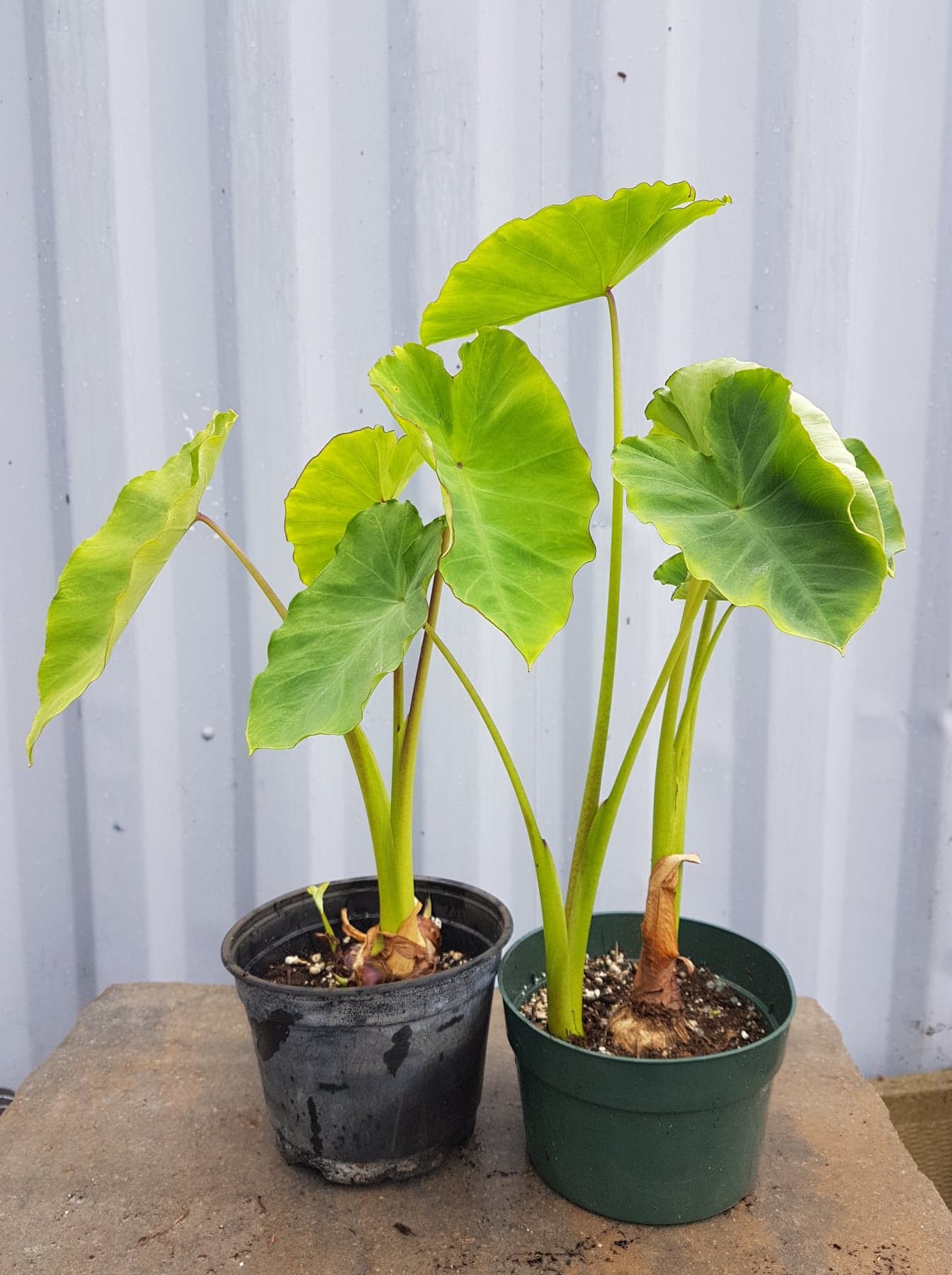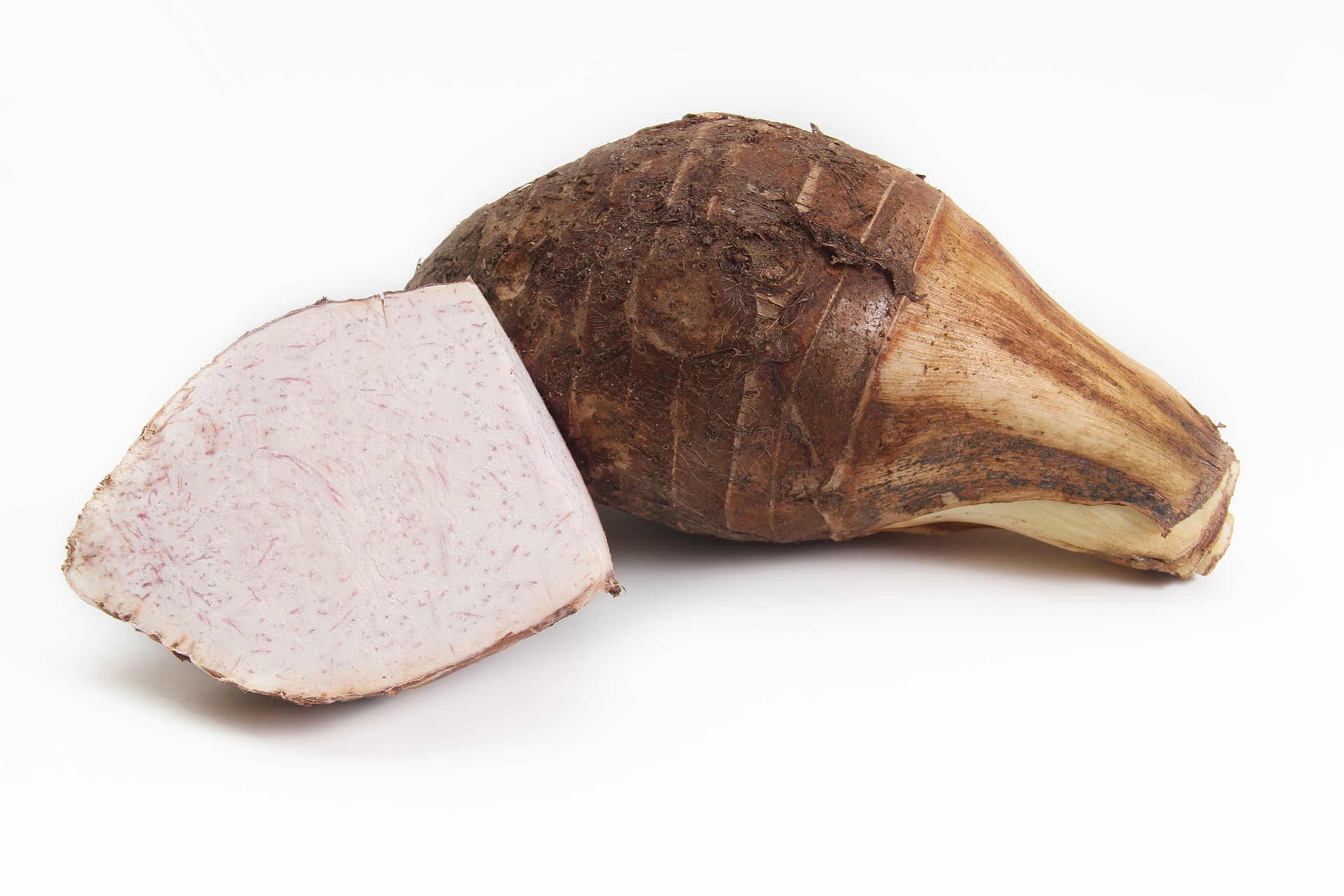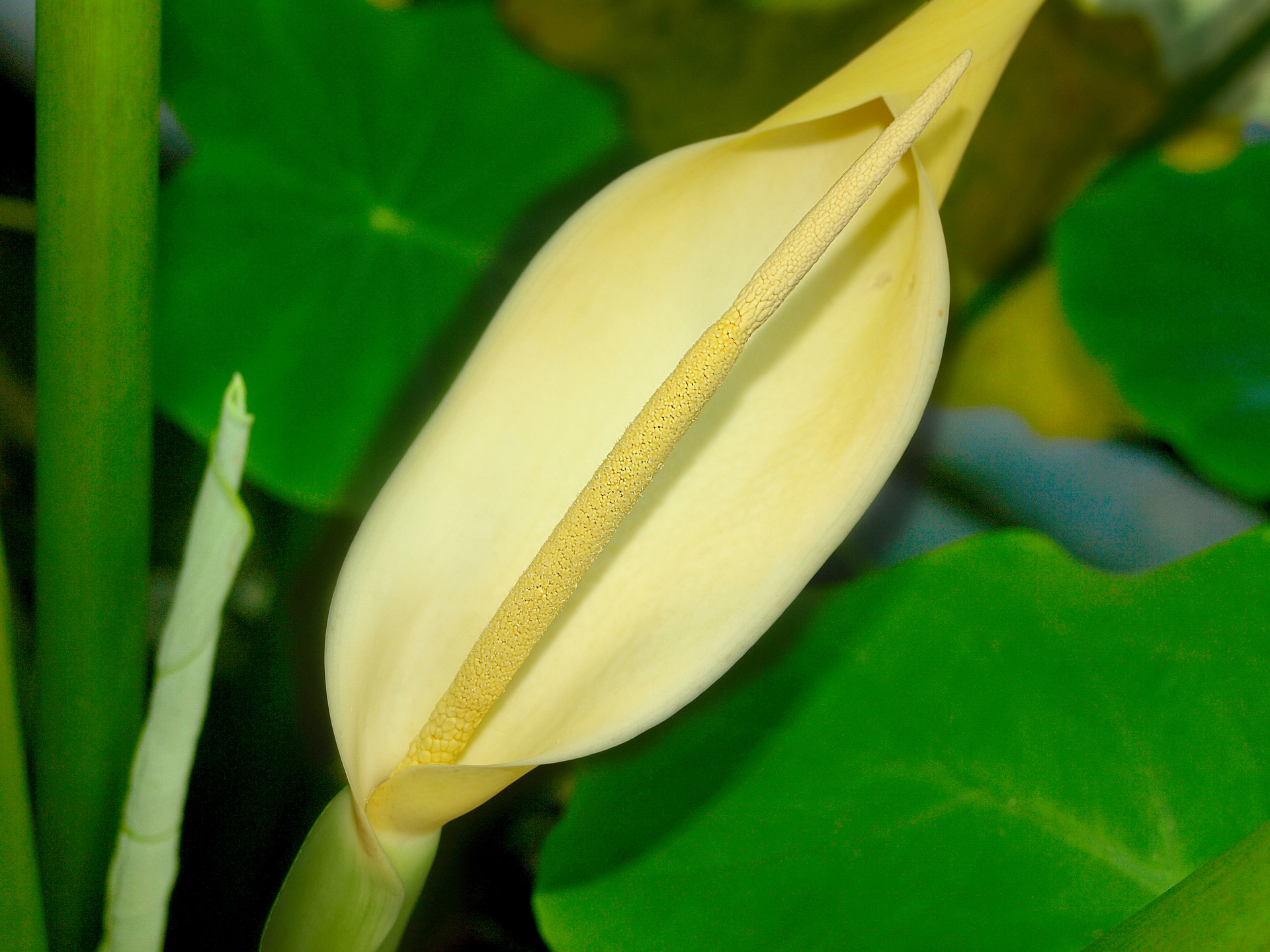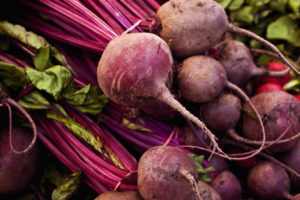Description
Taro doubles as not only a beautiful ornamental plant, but also a nutritious root and leaf vegetable. Also known as Dasheen, this is a perennial tropical and subtropical plant can be grown and propagated in containers. Native to South and South-East Asia, the starchy, sweet tuber can be used to make chips, or flour, and the leaves can be eaten young and cooked (to eliminate bitterness), or they can be left to grow tall, decorative, heart-shaped leaves in bright shades of green. This plant can grow to between 3 and 5 feet tall.
Taro Plant Care
Taro naturally grows in wetlands, however in Quebec, it is best to grow this plant in containers which can be left outside in summer, and brought indoors during winter. Taro (or Colocasia) needs to be constantly wet, so choose a large pot with no drainage, with soil rich in peat and organic compost. Place the plant where it can get direct sunlight for at least 6 to 8 hours a day. Fertilize every fortnight during growing and harvesting season.
Harvest and Propagation
Come winter, you can harvest your taro leaves and bulbs for consumption. Dig up and store a couple of root bulbs for winter in a cool, dark place, or put your plant in a cool basement or cellar, and do not water much or fertilize. Once planted again, each bulb should eventually create offshoot bulbs and self-propagate once more.
Note: Nurseries often sell only decorative or ornamental taro, and grocery store roots are often treated with an inhibitor to prevent sprouting.



